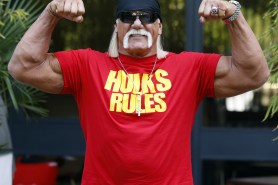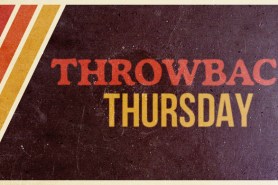U.S. President Donald Trump on Tuesday followed through on his announced plan to double tariffs on foreign steel and aluminum imports to 50 per cent, signing an executive order that sets a Wednesday start date for the massive increase.
Trump’s order, provided by the White House, says the new tariff rate is necessary for national security reasons and to bolster the steel and aluminum industries in the U.S., and that the 25 per cent tariffs he imposed in March had not had the desired effect.
It said he arrived at his decision after considering new information from his administration, “among other things.”
“In my judgment, the increased tariffs will more effectively counter foreign countries that continue to offload low-priced, excess steel and aluminum in the United States market and thereby undercut the competitiveness of the United States steel and aluminum industries,” the order says.
“I have determined that increasing the previously imposed tariffs will provide greater support to these industries and reduce or eliminate the national security threat posed by imports of steel and aluminum articles and their derivative articles.”
The increased duties will kick in at midnight Wednesday, according to the order, which Trump signed without reporters or cameras present.
There are no exemptions for Canada, whose steel and aluminum industries have warned of damaging impacts for producers and the North American supply chains.
The only exemption is for the United Kingdom, which will see a 25 per cent tariff rate maintained for its steel and aluminum under a new trade agreement framework announced last month.
For all other countries, the White House said, “The steel and aluminum tariffs will apply only to the steel and aluminum contents of imported products, whereas the non-steel and non-aluminum contents of imported products will be subject to other applicable tariffs.”
Trump first announced the tariff increase Friday at a rally in front of Pennsylvania steel workers, where he claimed he is saving the U.S. steel and aluminum industries with his tariffs and criticized countries for “dumping” cheap products he called “garbage.”
“He’s delivering on his promises to bolster our steel and aluminum industries in this country and to protect those jobs,” White House press secretary Karoline Leavitt told reporters at a briefing earlier Tuesday while previewing the executive order.
The increase comes just under three months after Trump first imposed 25 per cent steel and aluminum tariffs, resurrecting a policy from his first term.
While those initial tariffs have already led to cost increases and other impacts on Canadian metals producers, the industry has warned doubling them could “have unrecoverable consequences” on the North American sector.
“Steel tariffs at this level will create mass disruption and negative consequences across our highly integrated steel supply chains and customers on both sides of the border,” the Canadian Steel Producers Association said in a weekend statement.
The Aluminum Association of Canada has called the situation “unprecedented” for the industry.
Industry Minister Melanie Joly said Sunday the federal government plans to prioritize Canadian steel and aluminum for federal contracts and the domestic defence manufacturing industry, which it plans to bolster with new investments.
“We are in a trade war and we know that our steel and aluminum workers are worried — we’re standing up for them,” Joly said during question period in the House of Commons on Tuesday.
“We will continue to make sure that we fight by having strong counter-tariffs, that we protect our workers and we will build through very strong major national projects.”
Finance Minister Francois-Philippe Champagne — who has been involved in talks with the Trump administration about lowering tariffs through a new economic and security deal — said the government is working on measures to “favour” Canadian steel and aluminum for major projects built under promised legislation to fast-track “nation-building” infrastructure and energy production.
Asked if tariffs at any level will stay in place under any future deal with the U.S., Champagne said “we’ll see.”
“One thing I’ve learned now, and I think we’ve all learned, is unpredictability,” he said. “You’ve seen from the G7 finance ministers’ meeting (two weeks ago) how many things have happened since then, where we were all aligned in saying we needed to restore stability and growth.
“For all the workers who are watching us, the industry leaders, we’ve been saying we’re going to fight for you, we’re going to protect you, and we’re going to build Canada with Canadian steel.”
Ontario Premier Doug Ford vowed Monday to find domestic manufacturers to produce everything from aluminum beer and soda cans to steel beams in Canada and ensure “we onshore every single widget.”
On Tuesday, he called for Canada to retaliate to the new tariff increase with new 25 per cent tariffs of its own, claiming Trump’s new order broke a promise made after a standoff in the spring over a threatened surcharge on electricity Ontario supplies to the U.S.
“If they keep on the 25 per cent tariffs on steel, my recommendation is to slap them with a 25 per cent (tariff), because we can’t be kicked around any longer,” he told reporters in Toronto.
On May 30, Bea Bruske, president of the Canadian Labour Congress, called Trump’s plan to double steel and aluminum tariffs “yet another direct attack on Canadian workers and a reckless move that will send shock waves across the Canadian economy.”
“This decision will shut us out of the U.S. market completely, devastating Canada’s steel and aluminum industry and threatening thousands of good-paying, unionized Canadian jobs,” Bruske said.
Economists have said the higher tariffs could lead to significant cost increases for Americans. The government’s producer price index found the price of steel products has gone up roughly 16 per cent since Trump implemented the 25 per cent tariffs.
Alcoa Corp., a top aluminum producer in the U.S. and Canada, reported in April that its last quarter saw a US$20-million hit from tariffs, and that they could lead to a further US$90 million in additional costs in its second quarter.
Some U.S. organizations representing metal workers also note that tariffs aren’t the only solution needed to boost U.S. manufacturing.
“While tariffs, used strategically, serve as a valuable tool in balancing the scales, it’s essential that we also pursue wider reforms of our global trading system,” David McCall, international president of the United Steelworkers union said in a statement, noting that work must be done “in collaboration with trusted allies” like Canada — the top exporter of steel and aluminum to the U.S. — to help “contain the bad actors.”
—With files from the Canadian Press and the Associated Press
© 2025 Global News, a division of Corus Entertainment Inc.












 Ad Choices
Ad Choices